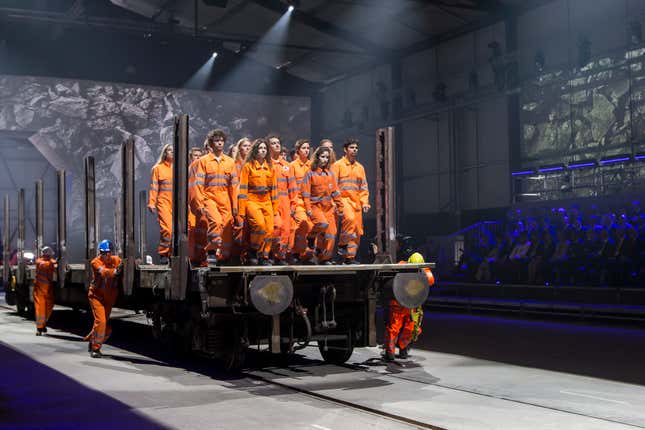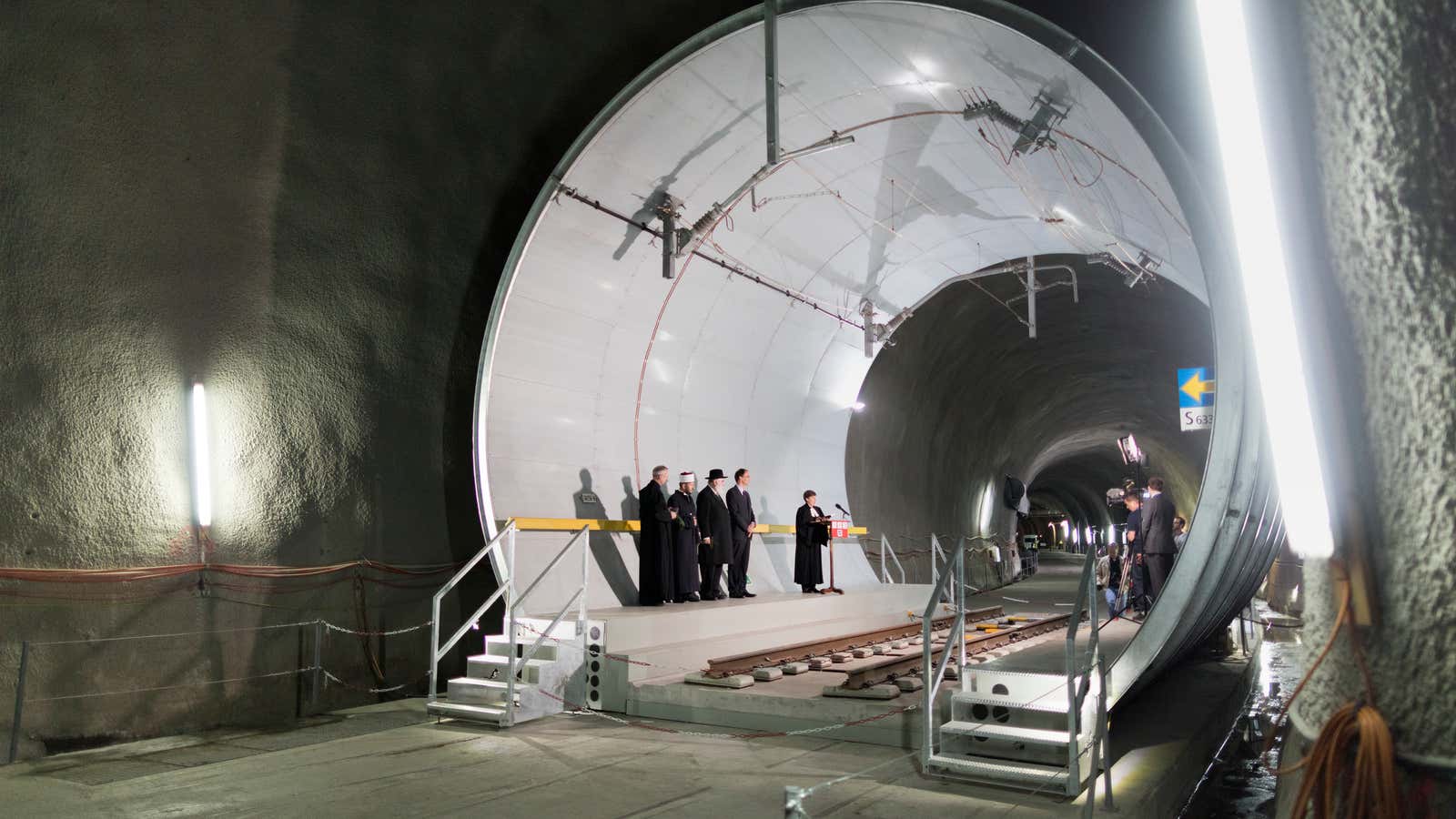How long would you wait to save an hour of travel time?
The Gotthard base tunnel—now the world’s longest rail tunnel—opened today (June 1), and it could shave about an hour off of travel between Zurich and Milan. But travelers had to be patient to get that extra 60 minutes. It took 17 years to build. But it was on time and on budget.
The 57-kilometer (35-mile) tunnel knocks Japan’s Seikan Tunnel to second place and the Channel Tunnel between England and France to third.

What makes the Gotthard base tunnel so remarkable is not only its length—which will become the basis for a high-speed rail link between the busy port cities of Rotterdam, in the Netherlands, and Genoa, in Italy—but its depth. In some places, the train is as deep as 2.3 km from the peaks above.
The track is flat, as opposed to the time-consuming design of winding through the mountains as many trains and roadways in areas with such difficult topography do. With a flat track, trains running through the Gotthard base tunnel can reach speeds of 250 km an hour. By comparison, half of Amtrak’s US inter-city trains operate at top speeds of 160 km an hour.

But with a $12-billion price tag, the project was relatively inexpensive compared to some US rail projects, considering just how intense the work on the base tunnel was. For example, the extension of New York City’s 7 train line—by one stop to Hudson Yards on Manhattan’s west side—took eight years and cost more than $2 billion.




